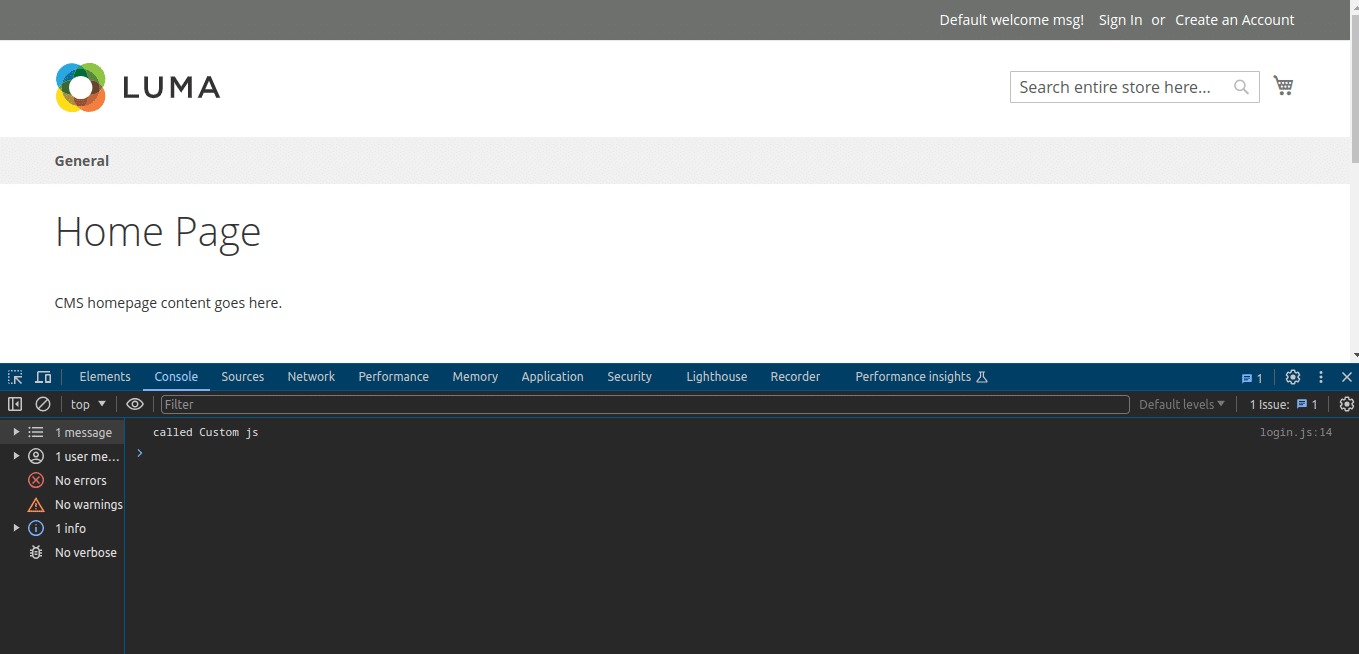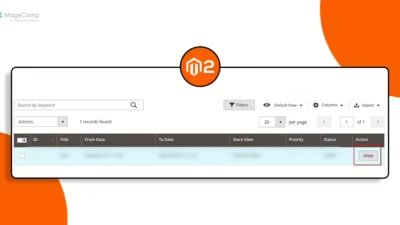Hello Magento Friends,
Sometimes, you may need to create a custom RequireJS file to add custom functionality or extend existing features. In this blog, we will guide you through the process of creating a custom RequireJS file in Magento 2.
Before diving into the implementation, it’s important to understand how Magento 2 utilizes RequireJS. Magento 2 uses RequireJS to load JavaScript modules asynchronously, which helps in improving page load times by only loading the necessary scripts when required. The requirejs-config.js file is where you configure your custom JavaScript files, dependencies, and paths.
Steps to Create Custom Require JS File in Magento 2:
Step 1: Create a “di.xml” file inside the Extension etc folder.
app\code\Vendor\Extension\etc
Then add the code as follows
<?xml version="1.0"?>
<config xmlns:xsi="http://www.w3.org/2001/XMLSchema-instance" xsi:noNamespaceSchemaLocation="urn:magento:framework:ObjectManager/etc/config.xsd">
<type name="Magento\Framework\RequireJs\Config\File\Collector\Aggregated">
<plugin name="requirejsConfigPlugin"
type="Vendor\Extension\Plugin\RequireJs\AfterFiles"
sortOrder="100"
/>
</type>
</config>
Step 2: Now create the “Afterfiles.php” file inside the Extension Plugin folder.
app\code\Vendor\Extension\Plugin\RequireJs
And include the code as below
<?php
namespace Vendor\Extension\Plugin\RequireJs;
use Vendor\Extension\Helper\Data;
use Magento\Framework\Component\ComponentRegistrar;
use Magento\Framework\Component\ComponentRegistrarInterface;
use Magento\Framework\RequireJs\Config\File\Collector\Aggregated;
use Magento\Framework\View\File;
use Magento\Framework\View\File\Factory;
class Afterfiles
{
const MODULE_NAME = 'Vendor_Extension';
protected $fileFactory;
private $componentRegistrar;
public function __construct(
Factory $fileFactory,
ComponentRegistrarInterface $componentRegistrar,
) {
$this->fileFactory = $fileFactory;
$this->componentRegistrar = $componentRegistrar;
}
/**
* Load mage-requirejs-config.js when meet the condition
* @param Aggregated $subject
* @param $result
* @return File[]
*/
public function afterGetFiles(
Aggregated $subject,
$result
) {
/* You can add your custom conditions here to check extension enable or disable */
$currentModulePath = $this->componentRegistrar->getPath(ComponentRegistrar::MODULE, self::MODULE_NAME);
$fileName = $currentModulePath.'/view/frontend/mage-requirejs-config.js';
$newFile = $this->fileFactory->create($fileName, self::MODULE_NAME, null, false);
$result[] = $newFile;
return $result;
}
}
Step 3: Now create the “mage-requirejs-config.js” file inside the Extension Web folder.
app\code\Vendor\Extension\view\frontend\
Then, add the following code
Note: Here, we have overridden the login.js file. You can override the file as per your requirement.
var config = {
map: {
'*': {
'Magento_Customer/js/action/login' : 'Vendor_Extension/js/action/login',
}
}
};
Step 4: Now override the “login.js” file inside the Extension js folder.
app\code\Vendor\Extension\view\frontend\web\js\action
Now add the following code snippet
/**
* Copyright © Magento, Inc. All rights reserved.
* See COPYING.txt for license details.
*/
define([
'jquery',
'mage/storage',
'Magento_Ui/js/model/messageList',
'Magento_Customer/js/customer-data',
'mage/translate'
], function ($, storage, globalMessageList, customerData, $t) {
'use strict';
/* custom require js call check */
console.log('called Custom js');
var callbacks = [],
/**
* @param {Object} loginData
* @param {String} redirectUrl
* @param {*} isGlobal
* @param {Object} messageContainer
*/
action = function (loginData, redirectUrl, isGlobal, messageContainer) {
messageContainer = messageContainer || globalMessageList;
let customerLoginUrl = 'customer/ajax/login';
if (loginData.customerLoginUrl) {
customerLoginUrl = loginData.customerLoginUrl;
delete loginData.customerLoginUrl;
}
return storage.post(
customerLoginUrl,
JSON.stringify(loginData),
isGlobal
).done(function (response) {
if (response.errors) {
messageContainer.addErrorMessage(response);
callbacks.forEach(function (callback) {
callback(loginData);
});
} else {
callbacks.forEach(function (callback) {
callback(loginData);
});
customerData.invalidate(['customer']);
if (response.redirectUrl) {
window.location.href = response.redirectUrl;
} else if (redirectUrl) {
window.location.href = redirectUrl;
} else {
location.reload();
}
}
}).fail(function () {
messageContainer.addErrorMessage({
'message': $t('Could not authenticate. Please try again later')
});
callbacks.forEach(function (callback) {
callback(loginData);
});
});
};
/**
* @param {Function} callback
*/
action.registerLoginCallback = function (callback) {
callbacks.push(callback);
};
return action;
});
Output:

Conclusion:
Creating a custom RequireJS file in Magento 2 allows you to add bespoke functionality and enhance the front-end experience of your e-commerce store. By following the steps outlined above, you can seamlessly integrate custom JavaScript modules into your Magento 2 store, ensuring that your code is organized, maintainable, and performs optimally.
If you have any questions or run into issues, feel free to leave a comment below, and we’ll be happy to help!
Happy Coding!












